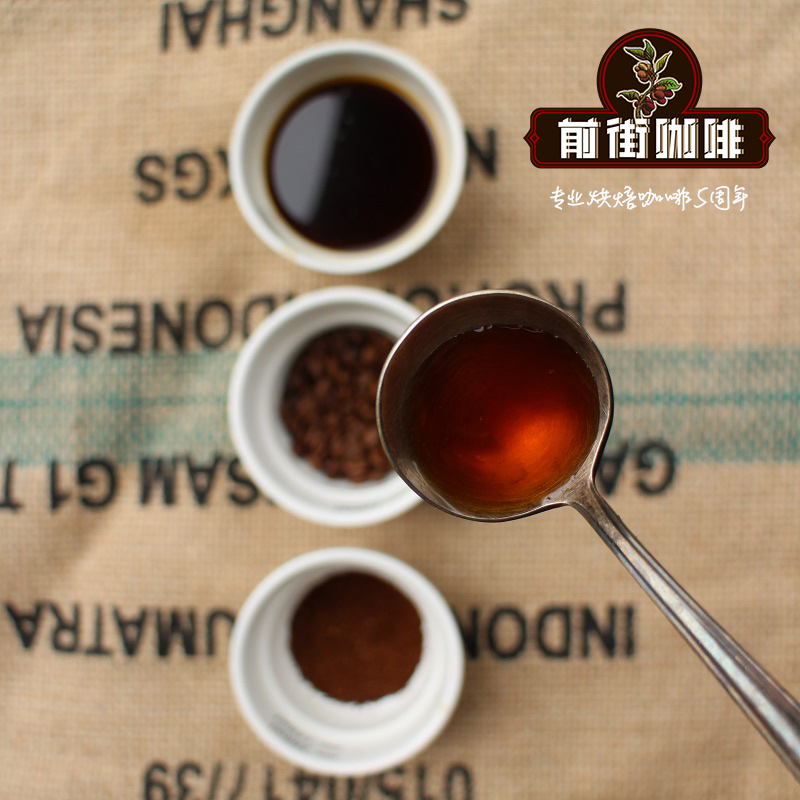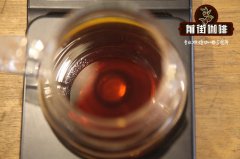Why pick beans? What is the effect of defective beans on coffee? How coffee defective beans are formed

Professional coffee knowledge exchange more coffee bean information please follow the coffee workshop (Wechat official account cafe_style)
More than 300 aroma compounds can be detected in raw coffee beans, and more than 850 in ripe coffee beans, with an astonishing complexity (this data is quoted from boutique coffee science)
But in the process of baking or cooking, there will still be a bad strange smell, which is of course abhorrent.
It is necessary to select high-quality raw beans, filter defective beans and adjust the appropriate cooking variables in order to keep the aroma beautiful and flash away the strange smell, and understanding is the first step in preventing and finding solutions!
The five stages of coffee aroma change
The aroma of coffee is the main purpose for us to buy and drink coffee.
Perhaps some people drink coffee to enjoy the strong flavor of coffee, do not care how much fragrance, let alone how the bar serves the cup of coffee he chooses.
The concentration of coffee feels to be the demand of these guests. Even so, we can't deny the emotion that most people feel when they enjoy the aroma of coffee.
Fragrance, only fragrance, is the highest value of coffee. Coffee lacks aroma, like a person without temperament. Temperament can have different forms and portions, and fragrance also has its different components and presentation.
Coffee that loses its flavor always makes people feel defective. Spend money on coffee, mainly because of its fragrance.
The factors that affect the quality of a cup of coffee come from four important stages:
1. Coffee plantation management: including varieties, planting environment and climatic conditions, fertilization, irrigation, pest control, etc.
two。 Post-harvest treatment methods: including harvest methods, post-harvest preservation, post-processing methods, cleanliness and hygiene of treatment sites, drying methods, storage methods and environment, and shelling process. And then there is the transportation process.
3. Baking method: including the understanding, operation and preservation of roasted coffee beans.
4. Make coffee.
That is to say, the quality of coffee is being shaped at all stages mentioned above, and the quality of coffee may be defective as a result of improper operation.
On the timing of corruption and defects in the aroma of coffee beans
The first stage occurs during harvest and drying:
When farmers dry coffee fruits or coffee beans, they will reflect the aroma of coffee beans and, in serious cases, cause rotten smell.
When harvesting coffee fruit, if the fruit is left in the coffee garden for too long, the bad smell in the garden will continue to be produced, and the enzymes inside the fruit will begin to break down the substances in the seeds.
Because of chemical changes, arabica coffee beans produce "Rioy" and robusta "rubbery".
Rubber smell
In the drying stage, if the coffee fruit is placed in a high-temperature and humid environment, the action of internal enzymes is accelerated to produce "fermented flavor" (fermented).
(explanation: this is why it is repeatedly stressed that after the coffee fruit is harvested, the peeling work should be completed on the same day, or within 24 hours, and should not be stacked for too long.)
Fermented taste
In general, coffee beans are laid on the cement floor, or on a high drying bed, or on plastic cloth.
The main purpose is to keep the sun-drying place clean and clean to avoid pollution. If the coffee beans are placed in an unclean place, especially when the soil is dry, the oil inside the beans absorbs the smell of the soil and produces a "earthy".
Earthy taste
If you put coffee beans in wet places, it is easy to cause mildew and produce a "moldy smell" (musty). If you use mechanical drying, when the drying speed is too fast, the oil inside the beans will decompose, resulting in a "skin stink" (hidy).
Smelly hidy
(explanation: mildew seems to happen slowly. In fact, because the environment is humid or drenched with Rain Water, coffee beans get moldy very fast, about 1-2 days, you can see the appearance of moldy phenomenon. In fact, when you see the appearance of mildew, it has been moldy for some time.)
The second stage occurs in the storage stage, which is the aging stage of coffee beans:
This stage is from harvest and drying to the period of baking.
In the first few months after harvest and processing, coffee beans have a unique grass smell, like the smell of freshly harvested alfalfa, known as "grassy".
Grass smell
The enzyme inside the raw bean continued to function, and after a few months, this aroma characteristic gradually decreased.
Until it is shipped and sold, it is called "new crop", that is, "seasonal beans".
(explanation: fresh beans that have just been harvested have their own characteristics as well as their unavoidable smell of green. This is also the reason why foreign beans are not in a hurry to ship after harvesting and finishing. Is to reduce the smell of green.)
When coffee beans are properly stored, the speed of enzyme action will be reduced.
About a year later, these chemical changes began to reflect the various acids inside the coffee beans. The taste senses this change, and this coffee bean is already a "past crop". If the enzyme action greatly reduces the content of various acids after several years of storage of raw beans, the coffee beans are called "old beans or aged beans" (aged).
In addition to the enzyme action, coffee beans slowly lose organic matter and gradually produce a hay-like "straw smell" (strawy).
Straw smell
After a few years, coffee beans continue to lose organic matter, eventually producing an unacceptable "woody".
Wood smell
The third stage occurs during baking, mainly coking:
When the baking temperature reaches 400 ℉ (204 ℃), the sugar inside the coffee bean continuously changes chemically: it combines with the organic and inorganic substances inside the coffee bean to form brown caramel.
The sugar inside the raw bean, as the heat increases, will shadow to the aroma inclusion.
If the heat is not enough, so that the coking process is not sufficient, the roasted coffee beans will have the smell of grass. The aroma is like the green bean (green peas) in green vegetables, called "stinky green flavor" (green).
Smelly green flavor green green beans
If the heating process is too slow, the roasted coffee beans taste insipid and smell tasteless, which is called "roasted flavor" (baked).
If the baking rate is too fast-the edges of the coffee beans are obviously charred-the chemical changes are not complete, forming a "tipped". If the heat is too high, the surface of the coffee beans will be scorched, resulting in a "scorched smell" (scorched).
In the fourth stage, after baking, the coffee beans will exhaust:
After roasting, coffee beans begin to exhaust; at this time, coffee beans are the freshest, full of aroma substances, most of which are volatile mercaptans or sulfur compounds.
When the coffee beans are ground into powder, the aroma will be greatly lost.
As exhaust continues, more volatile organic matter, a water-soluble aromatic mixture in the fiber, will be lost with the release of carbon dioxide. The loss of this aroma results in the "flat" of coffee beans.
Coffee beans continue to exhaust and volatile organic matter continues to be emitted, resulting in "tasteless beans" (vapid).
If water and oxygen enter the coffee beans, the quality will be even worse.
First of all, the oil inside the coffee beans will be oxidized. Shadow to the coffee taste, resulting in a "light taste" (insipid).
Then, continued exposure to oxygen and moisture accelerates the oxidation of linoleic acid and triglycerides, producing an unpleasant taste, a condition known as "stale (rancidity)" (stale).
In the end, the oil inside the coffee beans reacts with oxygen and water to produce an unpleasant quality, called "rancid".
Oil odor
The fifth stage is after brewing:
In the post-brewing (still) stage, the aroma of coffee changes faster than at other stages.
After brewing, coffee begins with the most "fresh" (fresh), that is, the most abundant content of volatile organic compounds that make up the aroma of coffee.
If the effervescent liquid in an unsealed container is continuously heated, the action of active molecules and the high temperature make the loss of gaseous matter faster.
The brewed coffee first loses its aroma and becomes "flat".
Continue to heat up to evaporate the volatile matter, making the coffee "vapid".
Prolonging the heating time will affect the preservation of organic matter in the coffee solution.
Long-bond organic matter breaks into short-bond substances, which will increase the acidic taste, which is called "sour astringent taste" (acerbic). It is proved that the coffee contains chloric acid.
Secondly, due to the evaporation of water, the salt concentration in the solution is relatively increased, resulting in a "saltwater flavor" (briny).
Saltwater taste
If you continue to heat the protein and turn the coffee liquid into a gel, there will be a "tar flavor" (tarry).
Tar smell
Finally, the concentration of alkali-containing substances in the coffee liquid increased, its bitter taste plus salt, showing a "salt" (brackish).
Important Notice :
前街咖啡 FrontStreet Coffee has moved to new addredd:
FrontStreet Coffee Address: 315,Donghua East Road,GuangZhou
Tel:020 38364473
- Prev

What's the difference between new beans and old beans in coffee? The preservation of coffee beans the way coffee is stored.
Professional coffee knowledge exchange more information on coffee beans Please follow the coffee workshop (official Wechat account cafe_style). The raw beans harvested during the harvest period are called new beans, while those harvested for more than three years are called old beans. Although the recent mainstream is New Dou, Lao Dou also has loyal fans. Understand the advantages of new beans and old beans, and enjoy the flavor. ● new beans give off fresh flavor
- Next

The effect of altitude on Coffee Why coffee beans growing at high altitude are better?
Professional coffee knowledge exchange more coffee bean information Please pay attention to the coffee workshop (Wechat official account cafe_style) Coffee raw beans are generally graded according to raw bean size, defect rate and altitude. The size and defect rate of raw beans are easy to understand. But why do some producing areas use the altitude of coffee beans as the basis for grading? many coffee sellers also boast that their coffee is at a high altitude.
Related
- Beginners will see the "Coffee pull flower" guide!
- What is the difference between ice blog purified milk and ordinary milk coffee?
- Why is the Philippines the largest producer of crops in Liberia?
- For coffee extraction, should the fine powder be retained?
- How does extracted espresso fill pressed powder? How much strength does it take to press the powder?
- How to make jasmine cold extract coffee? Is the jasmine + latte good?
- Will this little toy really make the coffee taste better? How does Lily Drip affect coffee extraction?
- Will the action of slapping the filter cup also affect coffee extraction?
- What's the difference between powder-to-water ratio and powder-to-liquid ratio?
- What is the Ethiopian local species? What does it have to do with Heirloom native species?

